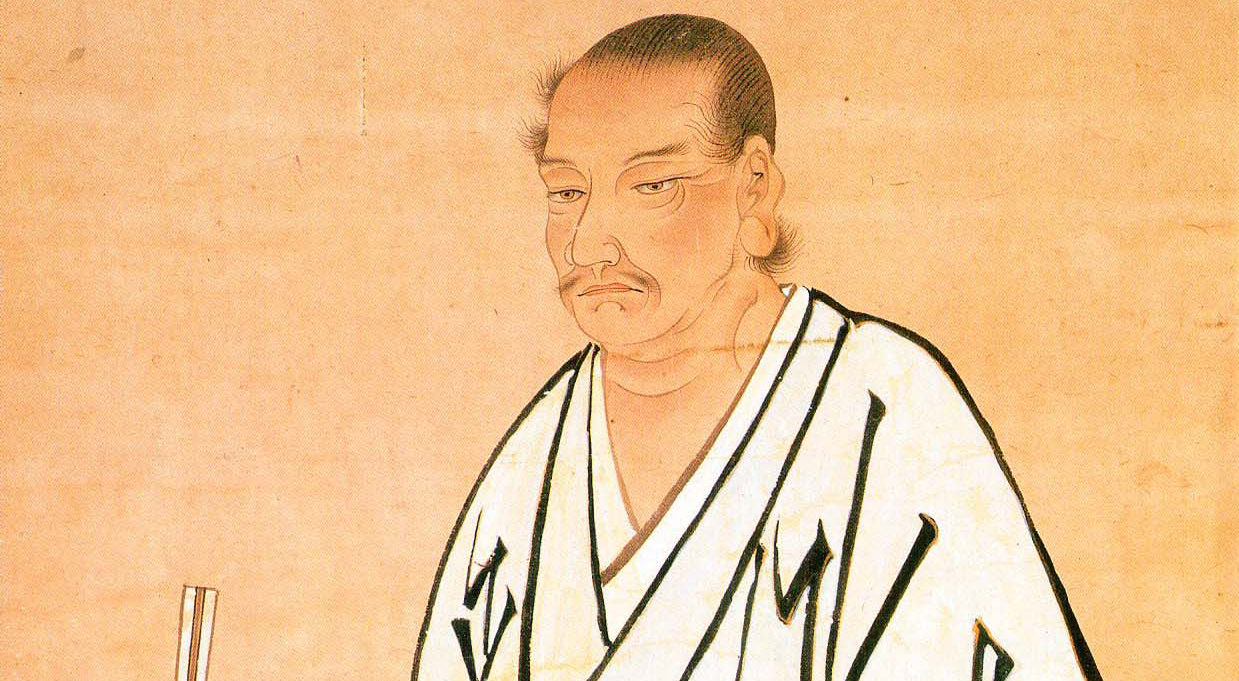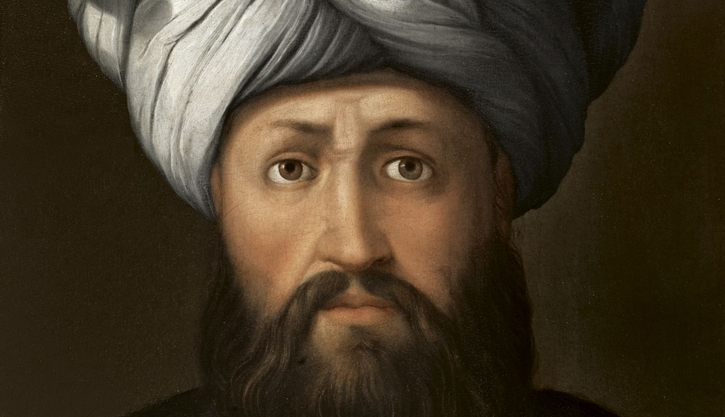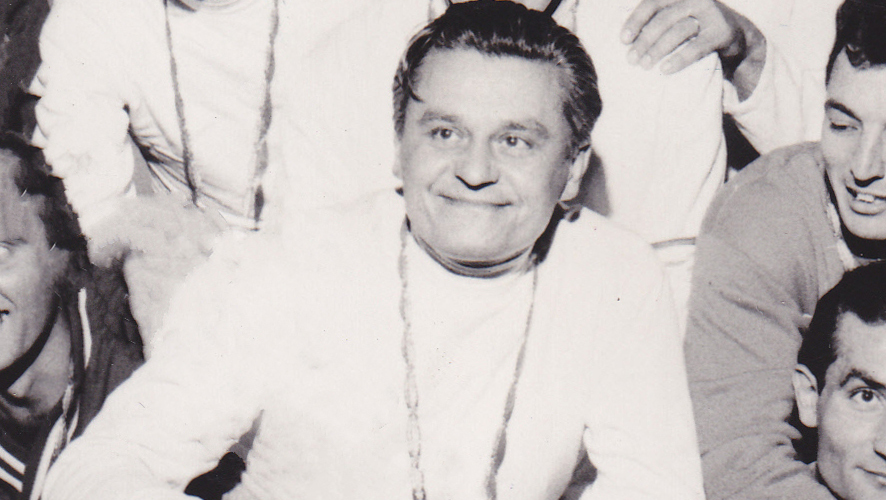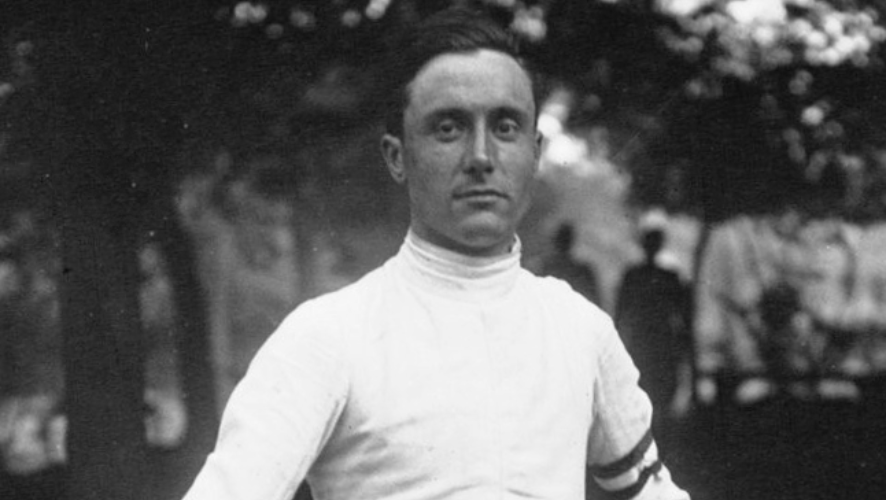A Cut Above The Rest
Timeless and unmistakable, the significance of the sword spans centuries, from ancient samurai to battlefield bravehearts and fast-footed fencing masters. As an object, it has transcended its simple form, becoming a cultural artifact. And yet, a sword is only as capable as the one who wields it. With a sword in their grasp, the men and women below achieved greatness. Read on to find out who made the cut.

Minamoto No Yoshitsune
Considered one of the most well-known and accomplished samurai in the history of Japan, Minamoto no Yoshitsune commanded the Minamoto clan and accomplished victory in several significant battles. After suffering a fatal betrayal at the hands of a son of a trusted ally, Minamoto is celebrated as a tragic hero.
 Collection of Chusonji Temple, Wikimedia Commons
Collection of Chusonji Temple, Wikimedia Commons
Fiore Dei Liberi
Author of one of the earliest surviving fencing manuals, Fiore Dei Liberi studied under a number of masters in the Italian and German regions of the Holy Roman Empire. Serving as a knight, magistrate, and peace officer, Fiore Dei Liberi emerged victorious from duels with accomplished fencing masters.
 J. Paul Getty Museum, Wikimedia Commons
J. Paul Getty Museum, Wikimedia Commons
Kamiizumi Nobutsuna
Regarded as a major figure in the development of Japanese swordsmanship (kenjutsu), Kamiizumi Nobutsuna was a samurai during the Sengoku period and a pioneer of the Shinkage-ryū school of combat.
 Samurai Bushido Society, Wikimedia Commons
Samurai Bushido Society, Wikimedia Commons
Donald McBane
Arguably the most famous swordsman from Scotland, Donald McBane participated in the Battle of Mulray, which was fought between the MacDonald and Mackintosh clans. After benefitting from instruction in fencing, McBane opened his own school of swordsmanship in Limerick. McBane dueled well into his 60s before retiring.
 Donald McBane, Wikimedia Commons
Donald McBane, Wikimedia Commons
Tsukahara Bokuden
Championed by Bruce Lee and described as a “sword saint” in his native Japan, Tsukahara Bokuden introduced the Kashima style of sword fighting. In a legend, Bokuden was challenged by a ruffian who questioned his sword fighting style. Bokuden advised the ruffian that he subscribed to the “style of no sword”. After convincing the ruffian to board a boat to a nearby island, Bokuden left the ruffian stranded on the island, thus defeating his opponent by fighting without fighting.
Johannes Liechtenauer
Active during the second half of the 14th century, Johannes Liechtenauer was a German fencing master who traveled extensively to hone his skills. In addition to providing students with instruction on fencing, Liechtenauer also pioneered teachings in armored dueling and fighting on horseback.
 Unknown Author, Wikimedia Commons
Unknown Author, Wikimedia Commons
Joseph Bologne
Known as the Chevalier de Saint-Georges, Joseph Bologne excelled in several artistic and athletic disciplines. Accounts from his fencing academy suggest that Bologne was already defeating some of the best swordsmen at the age of 15. Bologne was still a member of the academy when he defeated fencing master Alexandre Picard, in a high-profile match.
 Mather Brown, Wikimedia Commons
Mather Brown, Wikimedia Commons
Itō Ittōsai Kagehisa
Known as the innovator of the “one sword” or “one stroke” sword fighting school, Japanese swordsman Itō Ittōsai Kagehisa is known to have fought 33 duels and emerged undefeated. His singular technique, known as Musōken, involved anticipating the movements of an opponent and striking without thinking.
 Unknown author, Wikimedia Commons
Unknown author, Wikimedia Commons

History's most fascinating stories and darkest secrets, delivered to your inbox daily.
El Cid
Based on his heroic achievements as a knight, Rodrigo Díaz de Vivar earned the title of El Cid, which translates loosely as “the Lord” or “the Master”. As a swordsman, Diaz de Vivar has become the most celebrated national hero of Spain, with his accomplishments on the battlefield elegized in the epic poem El Cantor de mio Cid.
 Marcos Hiráldez Acosta, Wikimedia Commons
Marcos Hiráldez Acosta, Wikimedia Commons
Sasaki Kojiro
As a Japanese swordsman, Sasaki Kojiro is credited with founding the Ganryū or “Large Rock style” of sword fighting. Kojiro is best known for his famous duel with Miyamoto Musashi in 1612. Although Kojiro perished in the duel, Miyamoto proclaimed afterwards that Kojoro was the strongest opponent he had ever faced.
 Utagawa Kuniyoshi, Wikimedia Commons
Utagawa Kuniyoshi, Wikimedia Commons
Miyamoto Musashi
Known for his distinct double-bladed or two-sword technique, Miyamoto Musashi founded the school of Hyōhō Niten Ichi-ryū, which translates roughly as “the school of the strategy of two heavens as one”. Undefeated over the course of 62 duels, Musashi is among the few Japanese swordsmen to earn the title of Kensei, meaning “sword saint”.
 Kumamoto Prefectural Museum of Art, Wikimedia Commons
Kumamoto Prefectural Museum of Art, Wikimedia Commons
Yagyū Hyōgonosuke
As a peer of Miyamoto Musashi, Yagyū Hyōgonosuke founded a mainline of the Yagyū Shinkage-ryū style of swordsmanship. According to legend, Musashi encountered Hyōgonosuke while staying in Nagoya. The master recognized Hyōgonosuke’s skill just by observing the way he carried himself. Instead of engaging in combat, it is told that the two swordsmen chatted like old friends.
 Utagawa, Kuniyoshi, Wikimedia Commons
Utagawa, Kuniyoshi, Wikimedia Commons
Achille Marozzo
Considered one of the most influential teachers of the Dardi tradition of fencing, Achille Marozzo authored a key text on the practice. Translated loosely from Italian, the title is The New Text on the Art of Arms. Marozzo’s work is still studied by historical fencing groups in various countries.
 Achille Marozzo, Wikimedia Commons
Achille Marozzo, Wikimedia Commons
Saladin
As a key figure in the Third Crusade, Salah ad-Din Yusuf ibn Ayyub, widely known as Saladin, displayed excellent swordsmanship on the battlefield. For his many successes in combat, Saladin swiftly ascended the ranks of the Fatimid Caliphate and served a vizier (high official). He later founded the Ayyubid dynasty.
 Cristofano dell'Altissimo, Wikimedia Commons
Cristofano dell'Altissimo, Wikimedia Commons
Alexander The Great
King Alexander III of Macedon is widely known as Alexander the Great due in part to his unparalleled swordsmanship. Though he only lived a mere 32 years, Alexander earned the legacy of a classical hero. As a commander, his tactics and conquests continue to inform scholars of conflict.
 Unknown author, Wikimedia Commons
Unknown author, Wikimedia Commons
Jeanne D’Arc
Driven by visions of archangels, Jeanne d’Arc— known worldwide as Joan of Arc— was destined to save France from English domination. She wielded a sword named Sword of St. Catherine, and it was engraved with five crosses on the blade. For her courageous efforts and her proficiency with a sword, d’Arc, living only to the age of 19, was honored as the patron saint of France.
 John Everett Millais, Wikimedia Commons
John Everett Millais, Wikimedia Commons
Genghis Khan
Founder of the Mongol empire, Genghis Khan employed his swordsmanship to conquer major areas in China and Central Asia. Deified in Mongolia, Khan’s legacy is conflicted by tales of tyranny and brutalism, but also accounts of his kindness toward allies.
 National Palace Museum, Wikimedia Commons
National Palace Museum, Wikimedia Commons
William Wallace
Misrepresented in the motion picture Braveheart, William Wallace served as a Scottish knight and key figure in the battles of Scottish Independence. Despite being grossly outnumbered, Wallace—along with Andrew Moray—commanded a small army to victory in the Battle of Stirling Bridge. He is widely depicted in artworks with a sword firmly in his grasp.
 Stevens Coolidge Place Collection, Picryl
Stevens Coolidge Place Collection, Picryl
Andrew Moray
Merging his army with that of Wiliam Wallace, Andrew Moray served heroically— sword in hand—during the Battle of Stirling Bridge. While the pair of Scotsman gained victory in the battle, Moray suffered severe wounds from which he would not survive.
 Roger Wollstadt, CC BY-SA 2.0, Wikimedia Commons
Roger Wollstadt, CC BY-SA 2.0, Wikimedia Commons
Edoardo Mangiarotti
The most decorated athlete in the sport of fencing, Italian master Edoardo Mangiarotti won 39 Olympic titles and World Championships. For his distinguished performance with a sword, the International Olympic Committee bestowed Mangiarotti with a Platinum Wreath.
 leolimpiadiditalia, Wikimedia Commons
leolimpiadiditalia, Wikimedia Commons
Aladár Gerevich
A close rival of Mangiarotti, Aladár Gerevich won no less than seven gold medals over the course of six Olympic games. What is possibly more incredible is that there was a gap of 28 years between Gerevich’s first gold medal and his last. In 1960, when Gerevich was advised by the Olympic Committee that he was too old to compete, he challenged an entire fencing team and proceeded to defeat each member.
 Unknown Author, Wikimedia Commons
Unknown Author, Wikimedia Commons
Valentina Vezzali
Italy produced another fine fencing champion in Valentina Vezzali, winner of six gold medals in the sword-sport. Vezzali also won 16 gold medals in the World Fencing Championships. After her fencing career, Vezzali served as a politician in the Italian Parliament, where her fencing strategy, we can assume, served her well.
 Marie-Lan Nguyen, Wikimedia Commons
Marie-Lan Nguyen, Wikimedia Commons
Tokugawa Ieyasu
As one of the the three “Great Unifiers,” Tokugawa Ieyasu was the first shogun of Japan’s Tokugawa shogunate. With his sword, Ieyasu fought in a multitude of battles and developed a code of conduct for samurais known as the bakuhan system.
 Kanō Tan'yū, Wikimedia Commons
Kanō Tan'yū, Wikimedia Commons
Oda Nobunaga
As the first of the three “Great Unifiers” of Japan, Oda Nobunaga led the extremely powerful Oda clan. Ruling by the sword, Nobunaga applied innovative tactics on the battlefield and within the civil government.
Honda Tadakatsu
Serving as samurai under Tokugawa Ieyasu, the esteemed swordsman Honda Tadakatsu participated in no less than 57 campaigns and emerged unscathed from each one. Tadakatsu’s katana sword has become a national treasure of Japan.
 Collection of Ryougenji, Wikimedia Commons
Collection of Ryougenji, Wikimedia Commons
Takeda Shingen
Head of the Takeda clan, Takeda Shingen was widely known for his exceptional skills in battle. Using his sword, Shingen defeated rivals and conquered regions. Shingen’s legacy was so powerful, it is purported that one of his greatest rivals wept upon learning of his passing.
 Tohaku Hasegawa, Wikimedia Commons
Tohaku Hasegawa, Wikimedia Commons
Rudolf Kárpáti
A master of many disciplines, Rudolf Kárpáti won a total of six gold medals over the course of four Olympic Games. In addition to his skills with the sword, Kárpáti was an officer in the Hungarian Army and an exceptional violinist.
 Unknown author, Wikimedia Commons
Unknown author, Wikimedia Commons
Pál Kovács
As Olympic teammate of Rudolf Kárpáti, Hungarian fencer Pál Kovács played a key role in the success of his Sabre fencing team. As an individual athlete, Kovács won medals in two separate Olympic games.
 Unknown Author, Wikimedia Commons
Unknown Author, Wikimedia Commons
Nedo Nadi
Winner of the most gold medals for fencing during a single iteration of the Olympic Games, Nedo Nadi was credited as one of the greatest fencers of the Italian tradition. After his fencing career, Nadi served as an exceptional coach in the sword-sport.
 Agence de presse Meurisse, Wikimedia Commons
Agence de presse Meurisse, Wikimedia Commons
Date Masamune
Known for his iconic missing eye, Date Masamune earned the nickname “One-Eyed Dragon of Oshu”. For his fierceness with a sword on the battlefield, the legacy and character of Masamune has inspired a number of Japanese period dramas.
 Tosa Mitsusada, Wikimedia Commons
Tosa Mitsusada, Wikimedia Commons
William Marshall
As a knight during High Medieval England, William Marshall loyally served five English kings. For his outstanding work with a sword, Marshall was deemed “the best knight that ever lived” by the Archbishop of Canterbury.
 -JvL-, CC BY 2.0, Wikimedia Commons
-JvL-, CC BY 2.0, Wikimedia Commons
Hector Roy Maclean
Known for his courageous exploits, Hector Roy Maclean served as the 6th Chief of Clan Maclean. Maclean was so well-known for his swordsmanship that many knights sought him out to engage in duels.
 James Grant, Wikimedia Commons
James Grant, Wikimedia Commons












